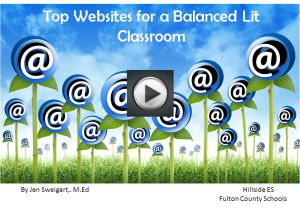Cloud Collaboration : Dropbox and Amazon Clouddrive
I’m headed into this school year looking for ways to increase PLC collaboration within my new grade level team. On my “To-Do” list this week are a couple of quick tech set-ups that are make sharing ideas, skill tasks, assessments, reading passages, and lesson hooks easy. Creating a digital cloud is number one on my list because it quickly fosters collaboration and sharing.
If you’ve ever changed grade levels, you may have found yourself wondering something along these lines… “This school has been open for ten years. How is there not a single notebook, binder, file cabinet, etc with a collection of tests, resources, and activities that students have done in this grade over the past 10 years??? The problem is that when teachers change grade levels, they take their hard work with them, only to forget about it in an old computer file. It’s time to start leaving a digital footprint and stop reinventing the wheel every time there’s an upheaval in teaching assignments.
Set up a “cloud” for your team with folders that match content areas, and subfolders that match standards. Then, have your team members upload content that can be used in all classrooms. On my team, we upload common assessments, workshop task cards, video clips, pictures of anchor charts, and any worthwhile PDF that matches our standards. Our main rule is that content that is uploaded needs to be premium content that is innovative, purposeful, and not a traditional worksheet. We also keep a copy of the instructional calendars on the cloud drive. Sharing our digital content enables us to make sure that all team members have access to materials, reduces clogs in our email, and leaves a digital footprint for future teams.
The two clouds I would recommend are Amazon Cloud Drive and Dropbox. Both are free, but limit the amount of content that can be held. I have used Amazon Cloud Drive for several years because it’s easy to navigate and allows a large amount of content on the cloud before meeting a size limit. DropBox has a smaller content limit, but downloading files to your computer is an easier process. I'm leaning towards switching to Dropbox this year because I'd like to reach out to other 3rd grade teams outside of my schools to collaborate, and Dropbox seems to be the more widely used cloud.
Good luck to everyone with pre-planning! My next post will focus on #2 on my To-Do list: Using Padlet to facilitate "shared leadership" roles on a PLC team.















